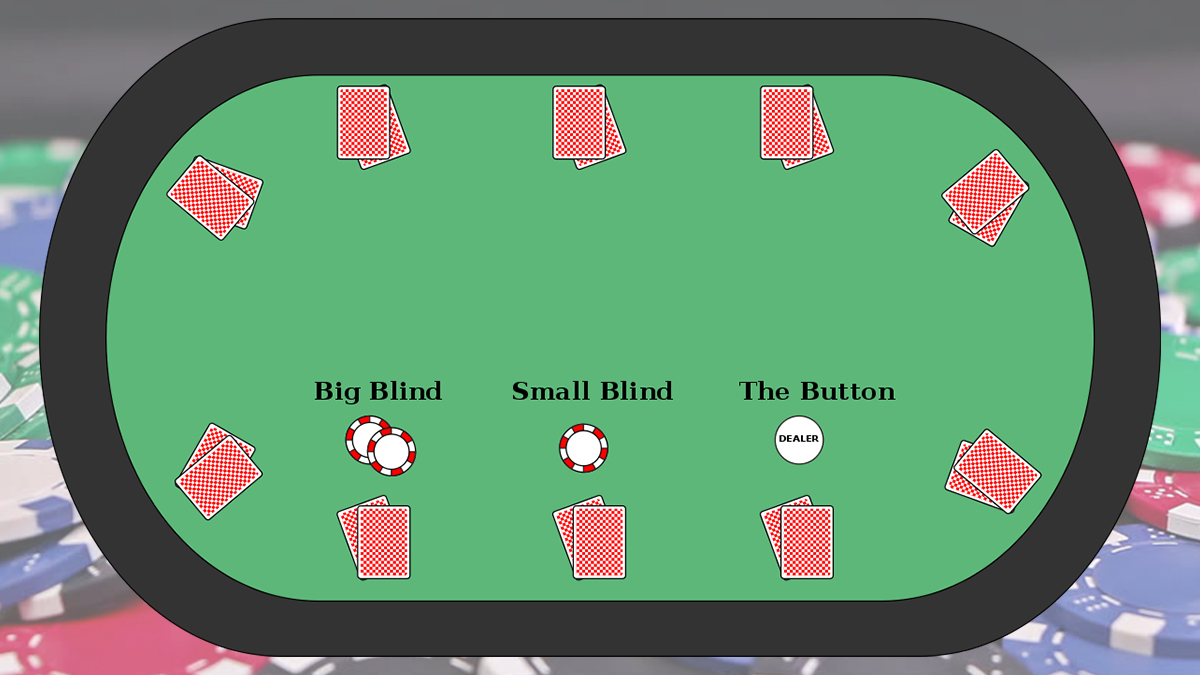Antes and blinds are forced bets that keep players in action at the poker table.
If you grew up in the 1970s and 1980s, like I did, you’re probably more familiar with antes than blinds. If you’re from a later generation, you probably learned to play Texas holdem at a younger age than I did. In that case, you might have learned about how blinds work before you became familiar with antes.
The concept behind both antes and blinds is simple, though:
If there’s no money on the line, you’d fold practically forever until you got a great hand. The game of poker would slow to a crawl.
But with forced bets on the table, there’s always an incentive – even if it’s a small one – to play any given hand.
Here’s how antes and blinds work in poker:
Antes Are Forced Bets that You Make on Every Hand
In games like draw and stud poker, it’s customary to bet an ante on every hand. In fact, if you haven’t paid your ante, you don’t get a hand at all.
Poker games are generally played for specific limits, and the antes are based on those limits. Low stakes games have tiny antes, while higher stakes games have correspondingly higher antes. The antes are always smaller than the minimum bets.
If you’re playing in a friendly home game with $1 and $2 limits, the ante might be a quarter. You’d put an ante in the pot before ever being dealt a hand. During the first round or 2 of betting, you’d be required to bet in increments of $1, and during the final round or 2 of betting, you’d be required to bet in increments of $2.
If you’re at a table with 6 players, you have $1.50 in the pot before anyone even sees their cards. Also, you must play at least about 1/6 of the time, or you’ll lose so much money in un-contested antes that it will be hard to break even – much less stand a chance of making a profit.
In a 5-card draw game, you only have 2 rounds of betting. With the stakes described, you’d bet 25 cents to get a hand. Before the draw, you’d bet and raise in increments of $1, and after the draw you’d bet and raise in increments of $2.
Sometimes, you’ll play in a 5-card draw game where the betting limits are the same before and after the draw, but the principle about the ante stays the same, it’s small compared to the size of your minimum bets.
Blinds Are Forced Bets You Make After a Pre-Defined Number of Hands
Modern poker players tend to play Texas hold’em exclusively, and in Texas hold’em, you have 2 forced bets – a small blind and a big blind.
And you don’t have to make these bets every hand. Instead, the blinds rotate around the table as the game continues. You only pay the blinds when it’s your turn.
As with an ante, a blind is a smaller bet than the betting limits, but a blind is usually larger than an ante. Instead of paying for every hand with antes, you’re paying for all your hands with the blinds.
Here’s an example:
You’re playing in a $4/$8 Texas hold’em game. Normally the small blind in this game would be $2, and the large blind would be $4.
The large blind is usually about the same as the minimum bet during the first 2 rounds of betting, and the small blind is half that size (or less).
In a $3/$6 game, for example, the small blind might be $1, while the large blind might be $3. Sometimes this is done to keep the numbers even.
Antes and Blinds in Poker Tournaments
In a poker tournament, you buy in for a dollar amount, but you’re given a specific number of chips to play with. These chips have no absolute value – they’re just an indicator of how well you’re doing during the tournament.
For example, you might buy into a tournament for $11 and get 1500 chips.
Most poker tournaments now are Texas hold’em tournaments, and they usually start with small blinds that increase in size as the tournament continues. They might be 5/10 for 10 minutes and double in size every 10 minutes.
This increase in the size of the blinds forces action on the part of the poker players. Eventually you must take risks and win pots or the blinds will cause your stack to dwindle to nothing.
In a lot of multi-table Texas hold’em tournaments, the blinds are also accompanied by an ante in the later stages of the tournaments. This adds a time factor to the tournament to force aggressive and looser play.
Antes in Table Games
Many casino table games are now based on card games. Such games often have an “ante” bet as part of the action. A casino game is one where the house is banking the action; you’re not playing against the other players at the table. You’re playing against the casino.
In such games, the ante is just the first bet in the game. Mississippi Stud is a good example. Here’s how it works:
You make a bet called an ante, and then you get 2 cards. You and the other players at the table also share 3 community cards, which are dealt face down in the middle of the table. You get to look at your cards before making a series of bets – 3rd street, 4th street, and 5th street.
After each bet, another card is revealed, and the bets pay off according to the pay table based on the strength of your hand.
You also have the option of folding, which means you forfeit your hand but don’t have to make further bets.
Antes in Blackjack Games and Other Table Games
In Oklahoma, the casinos use the word “ante” to refer to a fee they charge to play the game. For example, if you bet $5 on a hand of blackjack, you must put up $5.50. That extra 50 cents always goes to the casino. It’s not a real ante. It’s not a bet at all because it’s impossible to win.
That’s the difference between a fee and a bet.
This holds true for the craps and roulette games available at Oklahoma casinos, too. The size of the so-called ante changes based on the limits you’re playing for. The higher the limits, the more the ante is.
Also, the ante has a devastating effect on the house edge. If you bet $5.50, you’re always going to lose the 50 cents regardless of how the hand goes. That adds 10% to the house edge right off the bat.
It takes a game with a low house edge – blackjack – and turns it into a game with a huge house edge.
With perfect basic strategy, the house edge for blackjack is usually only between 0.5% and 1%.
Add that fee on there, and the house edge skyrockets.
One way to ameliorate this effect, though, is to bet more per hand. If you bet $10, you still pay a 50 cent ante, but that only represents 5% of your stake instead of 10%.
Propotionally, it’s a better deal for you.
I think it’s disingenuous to call these fees “antes” because the word implies that you’re placing a bet.
It’s not a bet if the house gets to keep it every time.
It’s a fee.
A Note about the Etymology of the Word “Ante”
The word “ante” is Latin for “before.” That makes sense because it’s a bet that you must make before you can join the poker game.
I recently got to use “ante” in a different context. I’ve been re-watching Breaking Bad with a friend, and I pointed out that we were going to watch the “penultimate” episode that night. He didn’t know what I meant, so I explained to him that “penultimate” means “next to last.”
The “ultimate” episode, of course, is the last episode.
But the “antepenultimate” episode is the episode before the penultimate episode.
Conclusion
It’s impossible to play poker well unless you understand the implications involved in antes and blinds. Antes might be more old-fashioned, but they’re becoming a part of Texas hold’em tournaments to speed up the game and encourage looser, more aggressive play.
Michael Stevens
Michael Stevens has been researching and writing topics involving the gambling industry for well over a decade now and is considered an expert on all things casino and sports betting. Michael has been writing for GamblingSites.org since early 2016. …



